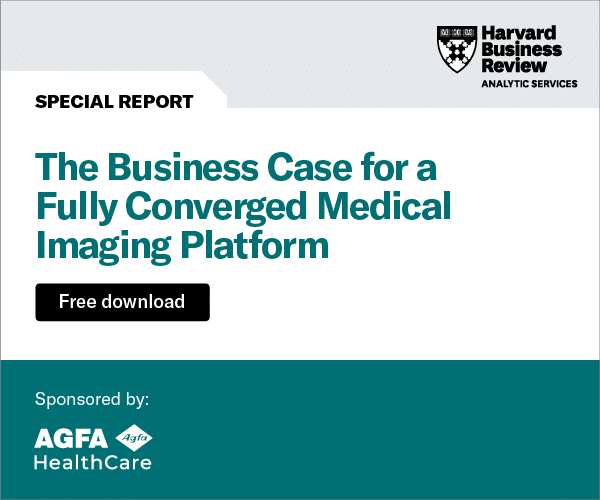Six good reasons to implement AGFA HealthCare Enterprise Imaging VNA
Simplify your IT landscape and enhance care collaboration, with curated, good-quality multimedia image data, stored in one place.
Implementing Enterprise Imaging VNA is about more than solving your imaging data storage challenges. It’s about providing image identification and capturing workflows that ensure that your metadata has excellent quality when creating a patient longitudinal view accessible within the EMR.
It is also about planning your archiving needs with the future in mind and exploring your cloud storage options. It support your corporate evolution, such as becoming part of a regional network, reducing IT complexity and cost.
Most importantly, it’s about giving your clinicians easy access to the entire patient imaging record and supporting the collaboration needed to deliver excellent patient care. The Enterprise Imaging VNA ticks all these boxes, with a modern, standards-based platform purpose-built on the latest technology.
Image data now comes from all over the hospital, and each type requires its own capture and storage workflow:

Diagnostic imaging, Evidence imaging (pictures, photographs, videos), Image-based clinical reports, Procedure imaging (EEG, ECG, Endoscopy, …)
Harvard Business Review
Special Report
Find out how technology and clinical leaders create business value by using platform technology to transform and converge their imaging IT and processes.
Based on in-depth interviews, this special HBR briefing paper shares health leaders’ motivation and results achieved.
Here are six good reasons to implement
AGFA HealthCare Enterprise Imaging VNA
1. Reduced complexity, enhanced cost-efficiency
No matter how or where an image is captured, Enterprise Imaging VNA can consolidate and curate it. The solution offers:

Simplified image data management:
with a single, central point of data management and administration, all core VNA functions can be configured and managed from the web-based administration tools with ease.

Administrator access
to all key tools with easy configuration of functions on the web without scripting or need for advanced professional services.

Advanced privacy and security management:
the rich toolset for configuring access control, privacy and confidentiality supports compliance with the GDPR and HIPAA. The audit record repository is IHE ATNA-compliant.

Reduced storage costs:
intelligent Information Lifecycle Management (ILM) tools, storage, and deletion rules optimize your storage while enabling faster access to the data clinicians to need.
2. Flexible image acquisition workflows, for robust metadata
Via Enterprise Imaging Multimedia Gateway images, videos and documents in its native format, are automatically ingested into Enterprise Imaging platform with the matching patient and exam in context.
This helps to converge images and videos from departments with non-standardized image sources into the Enterprise Imaging ecosystem. Your Imaging Health Record (IHR) remains enriched and provides multimedia content at your fingertips.

Flexible workflow and robust metadata
can be configured and tailored for each department, including non-DICOM multimedia data.

Quality Control workflows
enable patient/study reconciliation, even for imaging departments outside of radiology and cardiology.

Encounter-based image acquisition
can be made via the file system folder functionality. Specific folders will be monitored for data to be uploaded in the Enterprise Imaging VNA.

Anywhere, Anytime
Users can capture medical images anywhere, anytime, with their own mobile devices.
3. Enhanced care team collaboration
By adding the AGFA HealthCare XERO® universal viewer to your Enterprise Imaging VNA, you give your care team access to the multimedia patient images they need, wherever they are – including at the point of care.

The XERO web-based universal viewer offers collaboration tools with a timeline view and specialty hanging protocols.

The integrated Microsoft Teams® / AGFA HealthCare XERO functionality enhances the collaborative aspect between care team members from across multiple specialties. They can collaborate remotely to discuss medical cases and provide treatment decision support.
4. Cross-regional care
The Enterprise Imaging VNA enables you to meet the demands of regional health systems.

It provides the standards-based modular features and functions required for managing data across your regional health system.

Scalable solutions include a centralized VNA or a federated VNA for large regions with multiple VNAs.

Intelligent routing can be used for routing configuration and prefetching, including true query spanning.
5. Consolidated department workflows
With your Enterprise Imaging VNA, you have a powerful solution to reconstruct your imaging IT landscape.

The VNA can be enriched with Enterprise Imaging PACS or XERO Viewer products to add diagnostic capabilities to reduce the number of platforms and providers.

Additional departmental workflows can be activated.

You can easily add the VNA to your existing Enterprise Imaging platform to consolidate all your imaging data.
6. Cloud-enabled
The Enterprise Imaging VNA is cloud-ready. By moving your imaging data to the cloud, you enhance data protection, scale your infrastructure and refine cost predictions.

The VNA can be moved step-by-step to the cloud at your own pace.

Your imaging data can be hosted on public clouds such as Microsoft Azure and Amazon Web Services.

Cloud-enabled archiving eliminates storage planning, reduces future data migrations, reduces pre-payment for unused storage, and supports reliable image data availability.
A modern, purpose-built platform
- Multi-tier storage options with Information Lifecycle Management (ILM) tools
- Federation options to allowing for endless scaling
- Support for HL7, DICOM, Non-DICOM, XDS and FHIR data type integrations
- Integrated thin client viewing options including AGFA XERO
- Advanced event and audit management tools
- Operational KPI reporting and data analysis business drivers
“AGFA HealthCare’s Enterprise Imaging VNA works and has been trouble free.”
KLAS® Report,
Enterprise Imaging 2019
Scalable, vendor-neutral image storage

With over 1000 PACS and VNA deployments worldwide, AGFA HealthCare has connected with every major vendor in the world.

The Enterprise Imaging VNA integrates with hundreds, if not thousands, of products and acquisition systems from different vendors.

One of AGFA HealthCare’s largest Enterprise Imaging VNA installations connects 60 hospitals.
Enterprise Imaging VNA
All your images, from everywhere across your enterprise, on one, unified platform
No more information silos! Consolidate and manage all your imaging data, from multiple systems, departments, facilities and vendors, in a single, central archive.
Take control of your costs
Simplify your image data management and consolidate even your most isolated data, while reducing your storage, archiving and back-up costs.
Smooth the way to cross-regional care
Provide a standards-based and modular imaging data solution that answers the needs of a regional health system.
Unite all your departments in a single clinical IT landscape
Enrich your VNA with diagnostic and departmental capabilities that reach beyond the ‘traditional’ image-based radiology and cardiology, to include multimedia content from other specialties and drive the imaging workflows of all departments.
Empower collaboration at the point of care
When you combine your VNA with the XERO Universal Viewer, you give care providers access to all the multimedia information they need at the point of care.
XERO Universal Viewer
Enable borderless care team collaboration.
XERO Universal Viewer provides secure patient-centric access to imaging data from different departments and multiple sources, in one view, to anyone who needs it.













